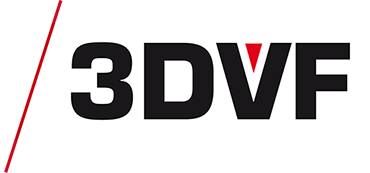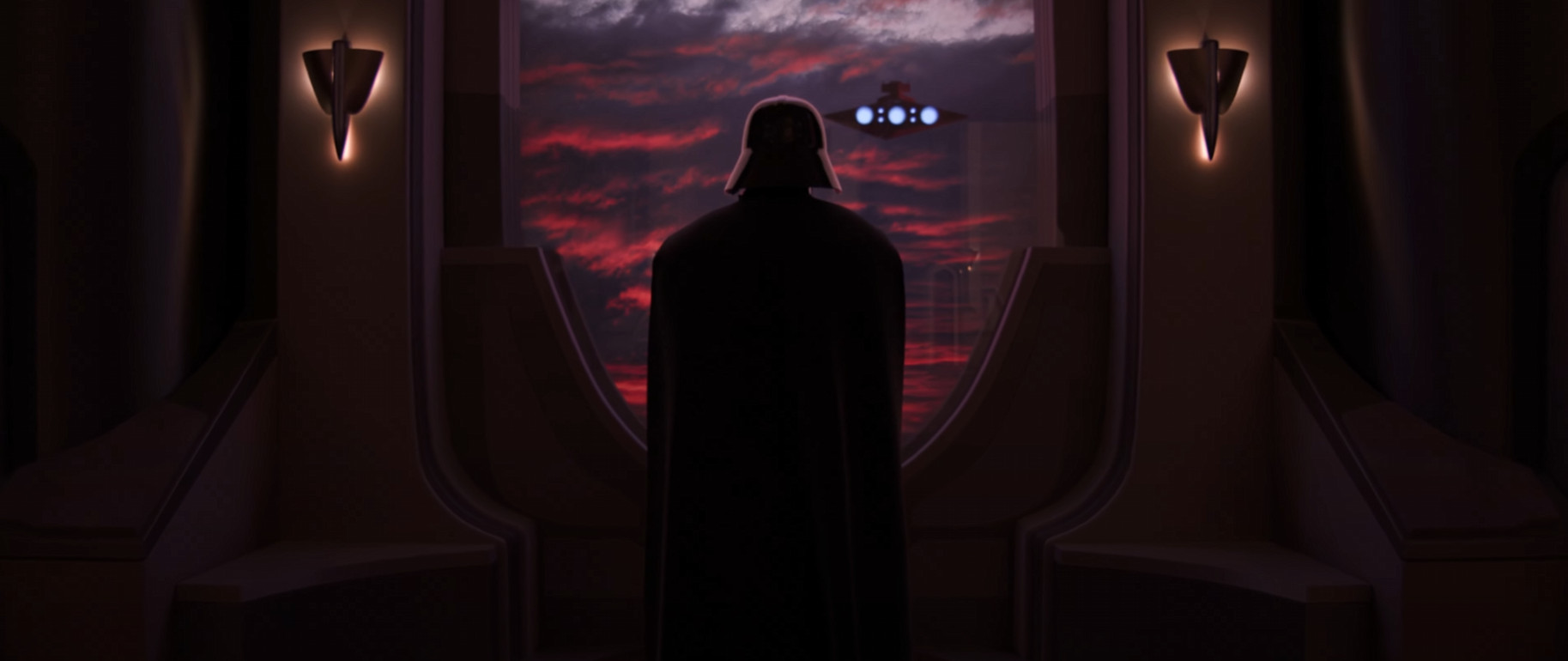This article is also available in:
![]() Français
Français
Before they graduate, students from French digital arts school VFX-Workshop create an end-of-studies project that showcases their skills. Recently, we talked about the new 2024 class projects, as we were part of the jury.
Nathan Dubuc, who is graduating this year, showcased us a one-minute Star Wars fan film titled The Fall of Skywalker. It features a mix of real and virtual sets, motion capture, and iconic characters and locations! Here’s the short film, followed by an interview about the making of this project.
3DVF: Hello Nathan, during the final jury of the VFX-Workshop, you presented a project inspired by the Star Wars universe. Can you introduce it briefly and explain what motivated you to dive into this universe?
Nathan Dubuc: Hello!
My project is a one-minute fan film that contemplatively tells the fall of Anakin Skywalker to the dark side of the Force. The idea was to recreate concept arts and redo scenes from the film by shooting footage that would be enhanced with VFX.
Choosing the Star Wars universe for my final project was almost obvious because the first special effects I created at the age of 12-13 involved adding a lightsaber effect to videos using the LS Maker tool, which was a very rudimentary software! It was through my desire to learn how to create lightsaber effects like in Star Wars that I learned After Effects, and from there, I began to venture into the world of VFX.
3DVF: What were your artistic and technical goals?
Nathan Dubuc: My main goals were to create a project that allowed me to combine CGI, real shots, and compositing. I wanted to put myself in conditions where I would receive shot footage with a list of effects to create, simulating a studio environment. This spirit is well represented in the first shot, filmed at La Défense (Paris, France), where everything beyond the ground and stairs was replaced with CG, including adding extras.
Artistically, I wanted the events shown in the film to be viewed from a detached perspective. I knew I was going to show scenes that many already know, so I wanted to present them from a different angle. The idea was to create a sort of retrospective of Anakin’s story.
3DVF: We were amongst the members of the jury and we particularly appreciated the ingenuity of the behind-the-scenes work: the La Défense shot, adapting to unforeseen circumstances with motion capture…
Nathan Dubuc: The shot at La Défense, which is the first shot of the project, was inspired by the way the Andor series was filmed. For some urban scenes, they decided to shoot in the City of London and replaced the buildings around the characters.
I absolutely wanted to replicate this approach for my project, and that’s how the first shot was born.
I wanted a scene in front of the Jedi Temple, and the Grande Arche at La Défense seemed like the ideal candidate with its long stairs and the vast space around it. So, we went to shoot on a Sunday morning to have as few people as possible (hoping for an early morning orange light, but that didn’t happen!).
The rest of the shots were filmed against a green screen at VFX-Workshop, with Renaud Jungmann, our director, who was a great help with the technical aspects of the shoot.
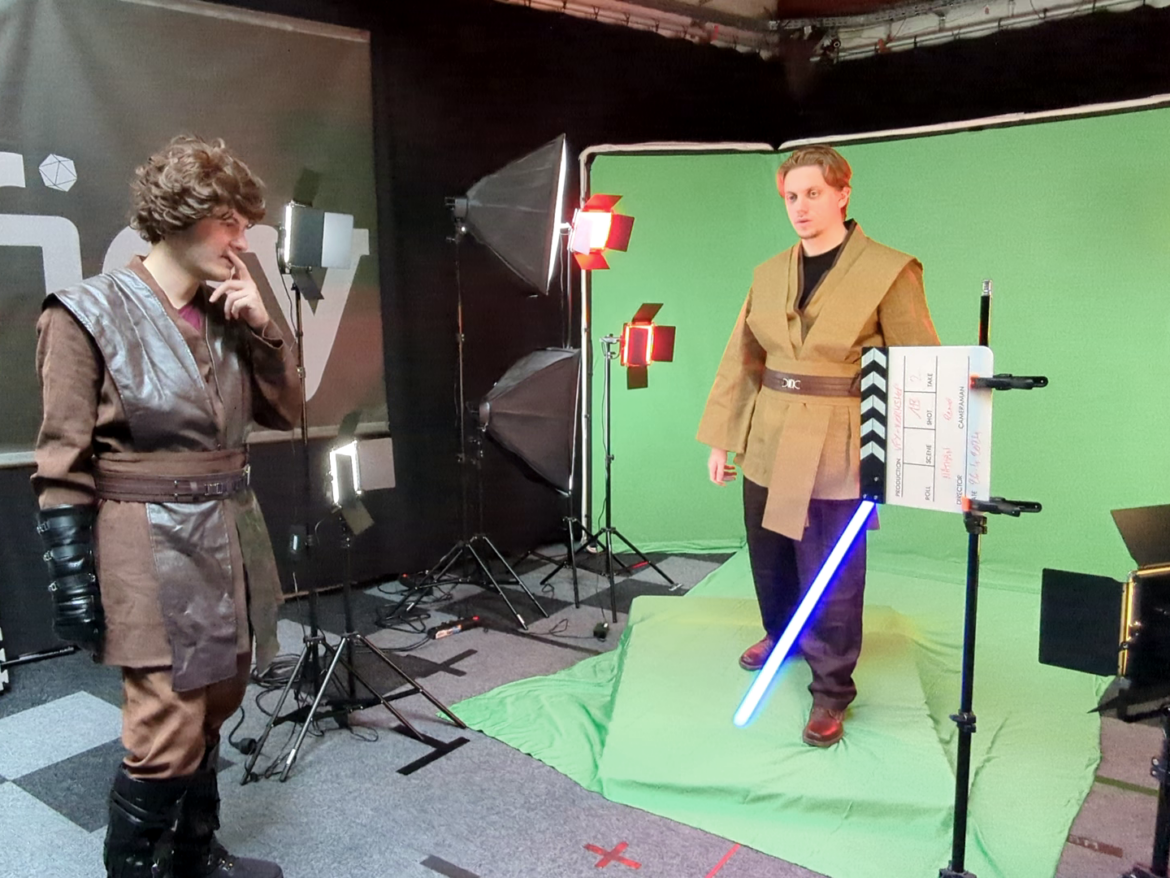
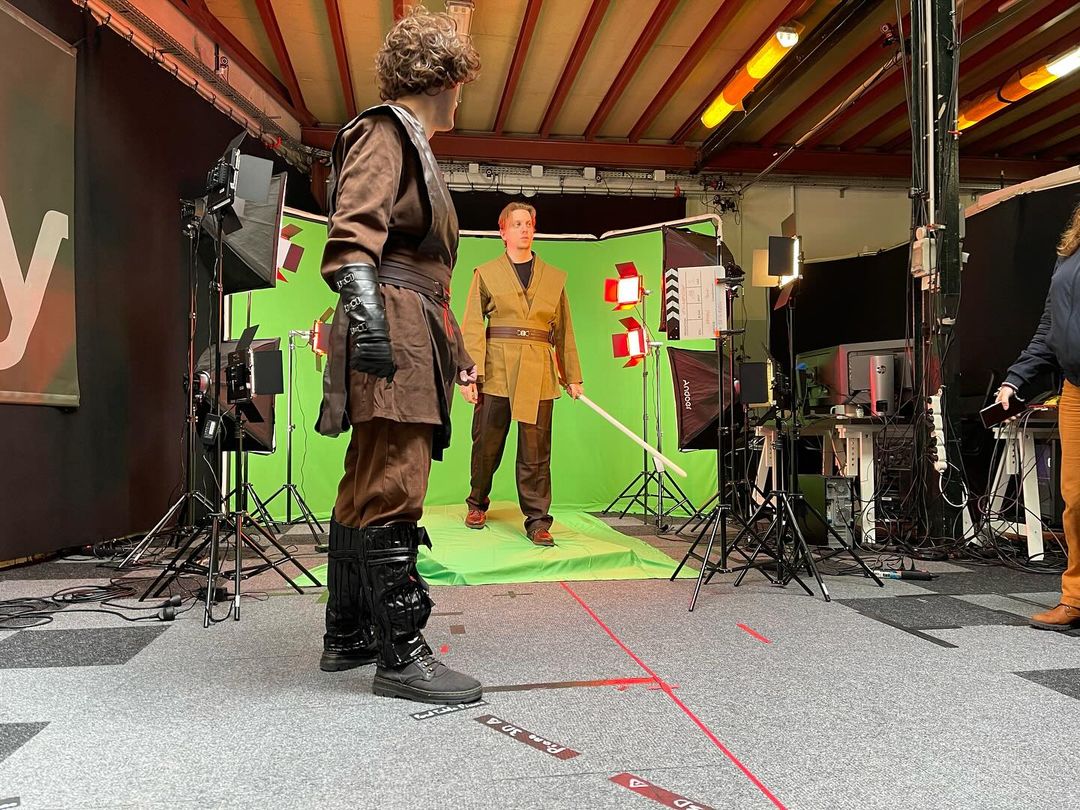
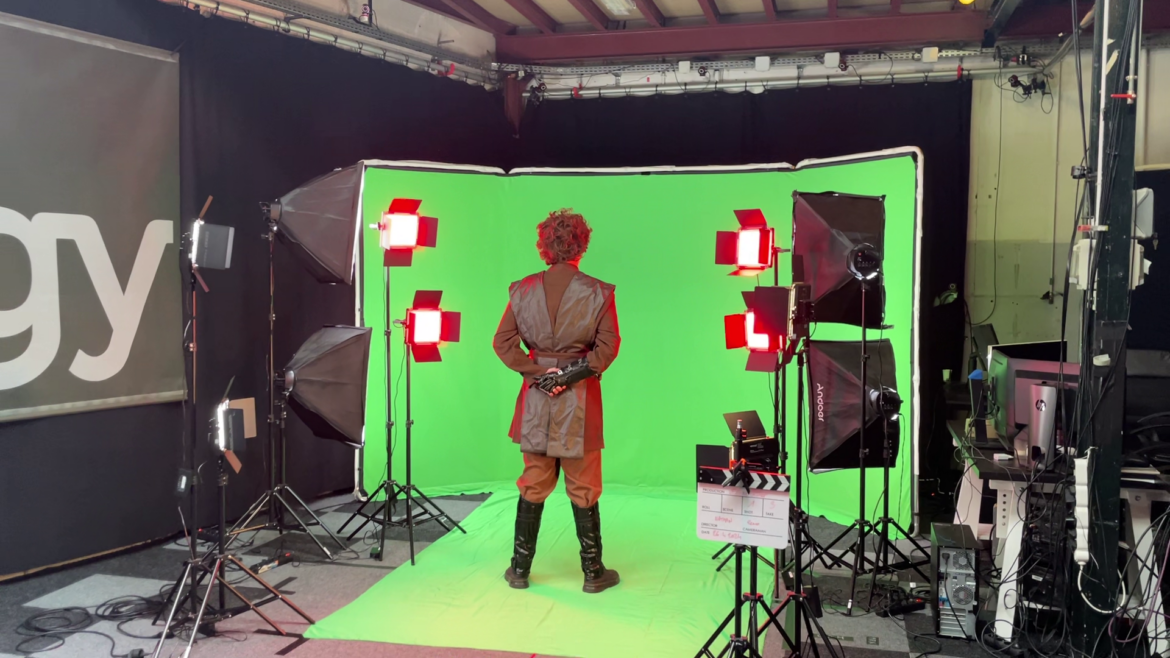
Initially, the plan was to have cosplayers play Anakin and Darth Vader. Unfortunately, scheduling conflicts made it impossible to film with them. So, I bought costumes of much lower quality for Anakin and Obi-Wan.
For Darth Vader, the impossibility of finding a filming date became apparent very late in the project. With only a month left before the project deadline, I gave myself an ultimatum: if within three days I couldn’t get a properly animated 3D Vader, I would leave a completely static Vader in the final shot.
Finally, thanks to the Cascadeur software and its AI mocap feature from a simple video, I managed to get an acceptable animation. I only needed to simulate a cape, which I achieved with the invaluable help of Emma Toubin, another student whose project heavily focused on cloth simulation.
3DVF: You also created several shots on Mustafar, the famous lava planet where Anakin and Obi-Wan duel. What were the challenges? Can you talk about the filming, the lava river/projections, and the compositing, which must have been difficult since there are numerous light sources?
Nathan Dubuc: The shots on Mustafar rely heavily on compositing. I knew I wouldn’t have time to push my 3D scenes very far and had too little time to try simulating lava projections in 3D…
CG was mainly used for two elements: the rocks/mountains, made in Blender or with Gaea, and the lava river, which is a procedural shader. This shader was reused in both shots, based on ambient occlusion to create cooler or hotter areas of the lava, and animated noise to move different lava layers.
In compositing, it was about adding many video elements to bring the shots to life. The most important were volcanic eruption videos I sourced from YouTube, warped onto the mountains, or simply placed in my scenes. They give life to the shots. Smoke elements from Action VFX were also used to add depth. Heat distortion added a lot to the second Mustafar shot.
Regarding the shoot, everything was filmed against a green screen, with the only challenge being to cheat with perspective! For the shot where Anakin burns and Obi-Wan stands on the hill, we filmed almost at ground level, using a real-time green screen return system rigged with OBS and a smartphone. We found the right angle to make it look like the characters were on a steep hill.
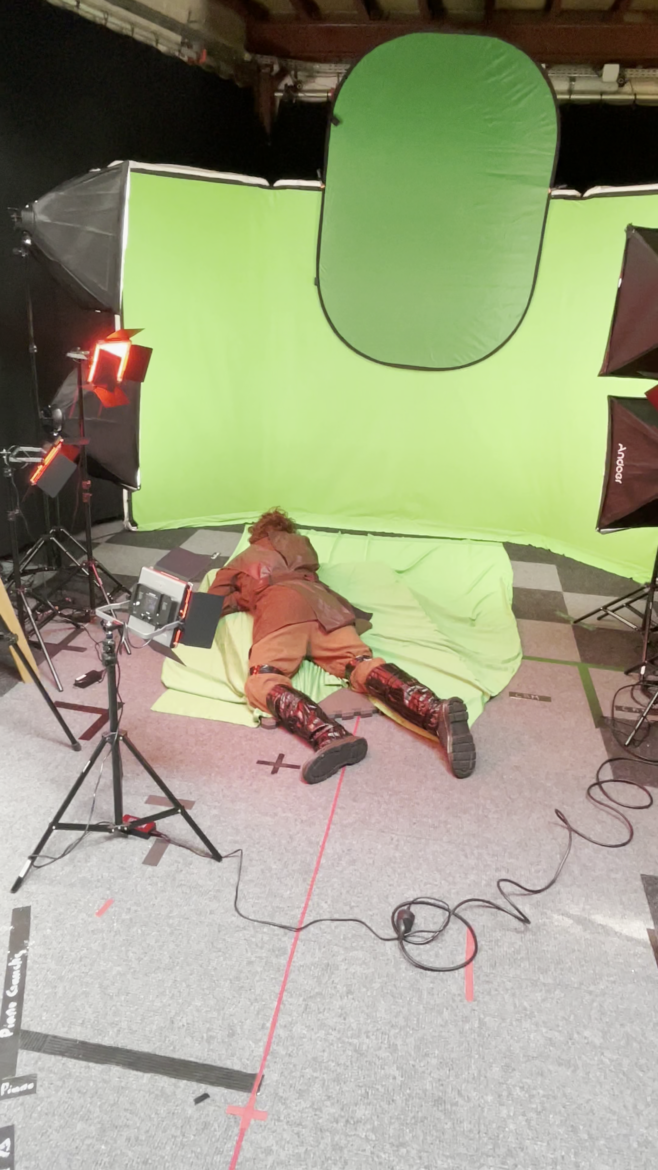
3DVF: Can you also tell us about the two shots in a large corridor, which visually echo each other?
Nathan Dubuc: Yes, these shots are why this project exists! Last summer, I came across illustrations by Dave Filoni, director of the Star Wars: Clone Wars series and creator of The Mandalorian and Ahsoka. My goal was to recreate these illustrations. They very simply evoke the tragic aspect of Darth Vader’s character. The colors chosen in the lighting are also very impactful.
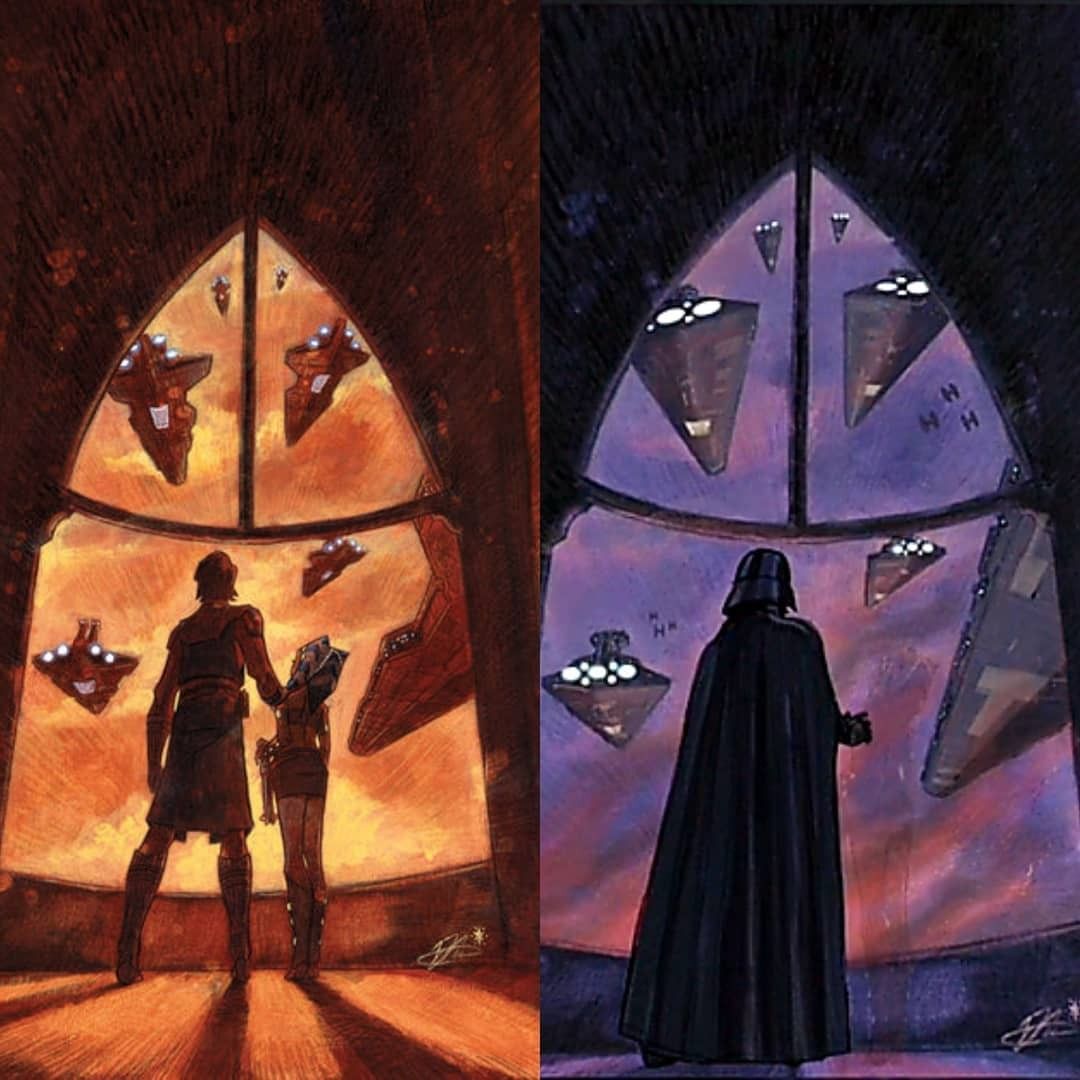
These were the first shots I worked on. I also decided to slightly change the decor, placing them in the Jedi Temple to create coherence with the first shot of the film and place the viewer in a known setting (this decor can be seen in Star Wars: Episode III and the Star Wars: Clone Wars series). I was fortunate to have dramatic skies in these shots, as I used photos I took during a trip to Edinburgh!
3DVF: In terms of lighting and compositing, we had an interesting debate within the jury, as you could either stick to the less contrasted visual style of the prequel trilogy or adopt a more modern style. What did you think of this debate?
Nathan Dubuc: I used captures from the prequel films as references throughout the creation process, which is likely why the colors are less contrasted and more lit in some shots. There’s also a fear of making the contrast too strong, losing details in the shadows.

3DVF: You’ve completed your three-year course at VFX-Workshop. What’s your assessment of this journey, and how do you see the future as a VFX artist ? What are your thoughts on the impact of AI?
Nathan Dubuc: It’s hard to realize all I’ve learned in three years at VFX-Workshop. Before joining, I feared I wouldn’t have a place or legitimacy in a VFX school. But I ended up learning so much—modeling, texturing, compositing, animation, motion capture, FX, lighting, ray tracing, and PBR. I also learned that the sector is very dynamic, with job availability constantly changing.
In my first year, we were told that specializing in FX was a sure bet for employment. Three years and a Hollywood strike later, students showcasing FX in their demoreels struggle to find jobs.
The VFX industry is also one where technology advances rapidly. In my first year, generative AIs weren’t even in general awareness. By the second year, tools like DALL-E, Stable Diffusion, Midjourney, and Firefly emerged, challenging much of what we learned.
Initially, there was a collective panic, but we soon realized these AIs have a significant weakness: the lack of control over the generated images.
Ultimately, they become just another tool, useful but requiring many adjustments to be usable.
What’s unfortunate is that AI could be used for genuinely revolutionary things for graphic artists. In this project, I used AI for mocap and rotoscoping, saving me weeks of work. We need tools that accelerate processes, repeat repetitive tasks, and leave the creative control to the artist. Unfortunately, major AI companies have focused on wow-factor tools with little practical use in a VFX pipeline.
3DVF: Finally, what kind of position are you looking for?
Nathan Dubuc: I’ve actually already found a job! I’ll soon start at a company creating product packshots for luxury goods. I’ll be able to apply the shading skills I acquired through this project, and I’m very excited!
To learn more about Nathan Dubuc:
- Nathan Dubuc on LinkedIn
- VFX-Workshop school profile on 3DVF (in French)
- Nathan Dubuc’s demoreel:
